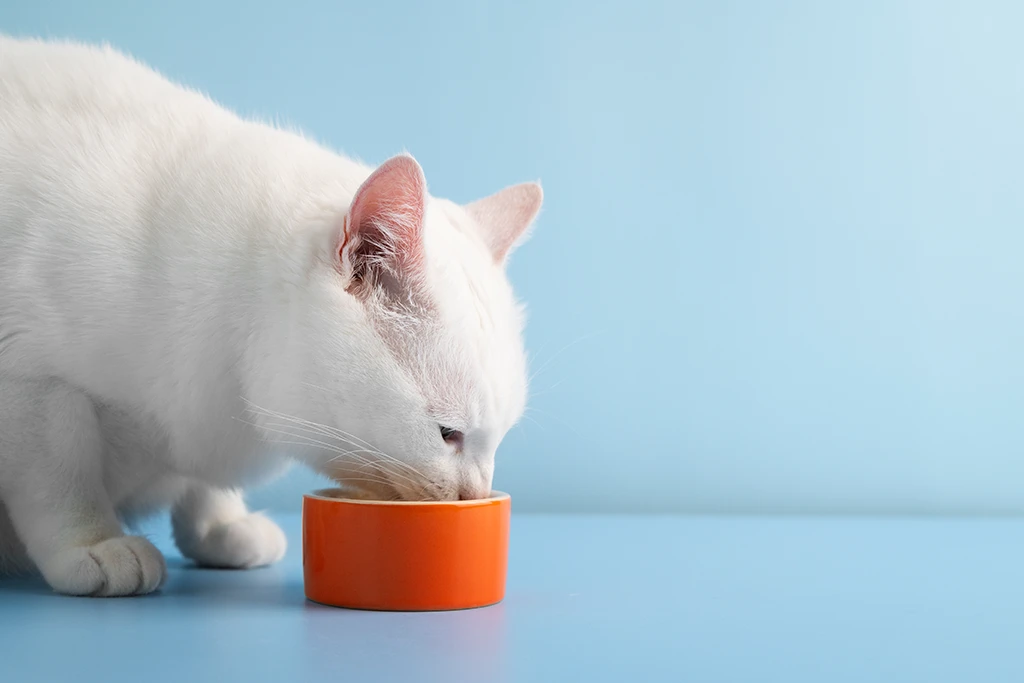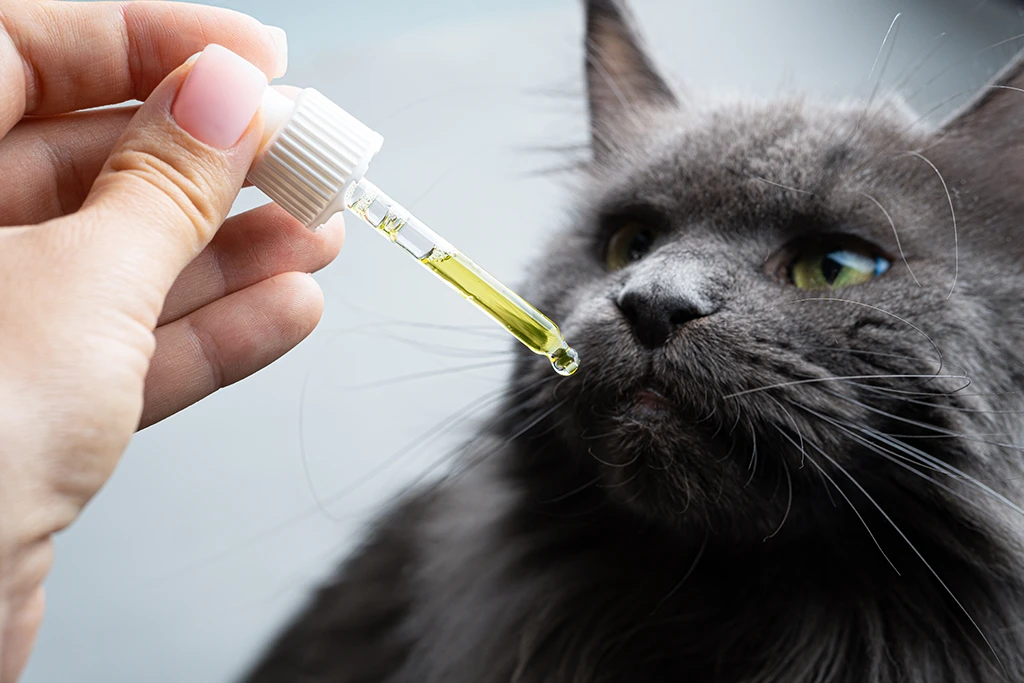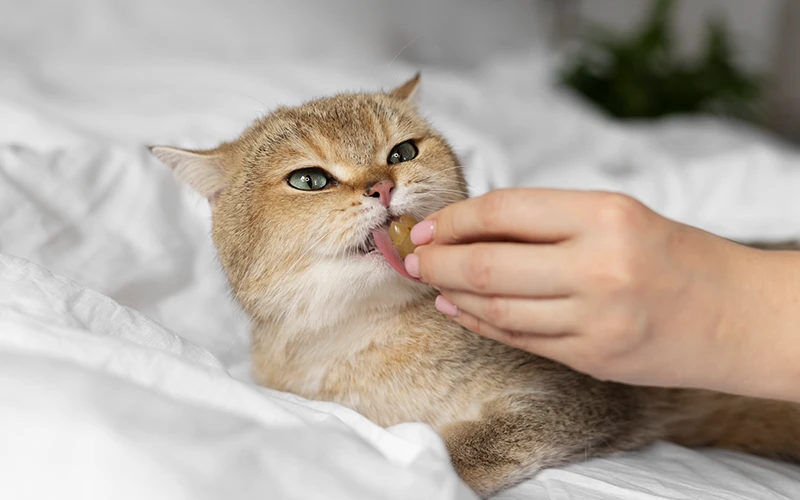

CBD, or cannabidiol, has gotten a lot of attention because it is good for both humans and their furry companions. Cat parents, always on the lookout for ways to improve their furry friends’ lives, are increasingly turning to CBD as a natural supplement. However, before incorporating CBD into a cat’s routine, one key question lingers: how long does CBD stay in their system?
Understanding this aspect is crucial for ensuring both safety and effectiveness. It helps determine the right dosage and frequency, minimizing the risk of any adverse reactions. So, let’s embark on a journey into the world of feline CBD and unravel the mystery of its duration.
Table of Contents
ToggleIn the realm of pharmaceuticals, half-life is a vital concept. It refers to the time it takes for half of a substance to be metabolized and eliminated from the body. CBD is no exception. Once administered, the cat’s body gets to work, diligently breaking it down and removing it. “The half-life of CBD in cats is 2.1 ± 1.1 hours,” (Wang, T., et al., 2022)
Whereas a study by Lyons, C., et al. (2024) published in the Frontiers in Veterinary Science shows that while CBD lingers in a cat’s system for up to 24 hours, its noticeable effects typically last only 4-6 hours. This is because the body needs a certain concentration of CBD to maintain the desired benefits. As the concentration drops below that threshold, those positive effects fade away.
Understanding how long CBD stays in a cat’s system isn’t a simple one-size-fits-all answer. Much like crafting a unique recipe, several factors contribute to the overall duration of CBD’s presence in a feline friend’s body. Let’s explore these key ingredients:
The amount of CBD administered plays a significant role in its duration. A larger dose naturally takes longer for a cat’s body to break down and eliminate compared to a smaller one. Think of it like a hearty meal versus a light snack – the heavier meal takes longer to digest.

CBD comes in various forms, each with its own absorption and elimination rate. CBD oil administered under the tongue, for example, is absorbed quickly into the bloodstream, potentially leading to faster effects but a shorter duration. On the other hand, CBD-infused treats take longer to digest and absorb, resulting in a slower onset but potentially longer-lasting effects.
In cats, CBD is primarily eliminated through the liver, where it undergoes extensive metabolism. The metabolic process involves cytochrome P450 enzymes, which convert CBD into its metabolites. These metabolites are further processed and are mainly excreted via feces and to a lesser extent through urine.
Due to the liver’s role in CBD metabolism, any conditions affecting liver function alter the rate of CBD elimination in cats. This also means that the presence of other substances that influence cytochrome P450 activity, such as certain medications impacts CBD clearance, either speeding up or slowing down its elimination.
“Cytochrome P450 enzymes play a major role in drug metabolism, with genetic polymorphisms affecting drug pharmacokinetics, response, and adverse drug reactions,” (Zanger, U., & Schwab, M., 2013)
Every cat is unique. Factors like age, weight, metabolism, and overall health all influence how the body processes CBD. An older cat with a slower metabolism retains CBD in their system for a longer period compared to a young, energetic kitten. “Aging impairs the metabolism of many drugs, requiring initial dose reduction and dose adjustment for older patients,” (Durnas, C., Loi, C., & Cusack, B., 1990). It’s essential to consider these individual factors when determining the appropriate CBD dosage and frequency for a cat.
Based on current research, CBD is generally detectable in a cat’s system for around 24 hours. However, the noticeable effects, like reduced anxiety or pain relief, usually last for 4-6 hours. Think of it like a gentle wave – it rises, peaks, and gradually subsides. In a human study, “CBD exhibited greater bioavailability in fed patients, with refined sesame seed oil contributing to dose-dependent variations in CBD pharmacokinetics, especially in the fasted state,” (Silmore, L., et al., 2021).
Even after the noticeable effects wear off, traces of CBD remain in a cat’s system. While this shouldn’t be cause for alarm, it’s important to be observant. Some cats exhibit subtle signs like slight drowsiness or changes in appetite. If unusual behavior or side effects are noticed, consult a veterinarian immediately. “Higher plasma levels of CBD and THC metabolites following administration of the CBD/THC combination product suggest a pharmacokinetic interaction in cats,” (Kulpa, J., et al., 2021).

The cat’s attending veterinarian is the best source for personalized dosage recommendations. However, as a general guideline, we suggest starting with a conservative dose of approximately 0.20 mg of CBD per pound of the cat’s body weight per day. Think of it as a gentle introduction to CBD, allowing cat parents to observe how their cat responds before making any adjustments.
If needed, gradually increase the dosage, but always do so under the veterinarian’s guidance. Keep a close eye on the cat’s behavior and any potential side effects. Remember, the goal is to find the perfect balance where the cat experiences the benefits of CBD without any unwanted reactions.
Choosing the Right CBD Product: Quality Matters
The CBD market feels like a jungle, with countless products vying for attention. But don’t worry, we’re here to guide paw-rents through the maze! Some key tips to help pet parents select a high-quality CBD product that’s safe and effective for cats are listed below.
Not all CBD is created equal. It’s essential to choose products specifically formulated for cats. These products are carefully designed with appropriate dosages and ingredients that are safe for feline consumption.
Reputable brands provide third-party lab test results, also known as Certificates of Analysis (COAs). These reports verify the product’s CBD content and ensure it’s free from contaminants like heavy metals or pesticides. Think of it as a quality assurance seal for a cat’s CBD.
THC, the psychoactive compound in cannabis, is harmful to cats. The limit of THC for pet CBD products has been set at 0.3%. So, When choosing a CBD product, make sure it complies to the restriction. This ensures a cat receives the potential benefits of CBD without any unwanted side effects.
Remember, not all CBD is created equal. Investing in a high-quality product ensures a cat’s safety and maximizes the potential benefits.
Before starting a cat on CBD, have a chat with the cat’s attending vet. Veterinarians guide owners to choose the right CBD product, determine the appropriate dosage, and monitor a pet’s progress.
However, not all veterinarians welcome the idea of using CBD on pets as research is still ongoing. In this case, consult holistic veterinarians for proper clinical assessment of the pet’s needs. Open discussions with them provide answers to questions, address any concerns, and ensure the pet’s CBD journey is a safe and successful one. It’s like having a trusted advisor, ensuring the best possible experience for a beloved cat.
Understanding how long CBD stays in a cat’s system is like understanding the rhythm of a song. It has a beginning, a peak, and a gentle fade-out. While CBD is detected for around 24 hours, its noticeable effects typically last 4-6 hours. However, pharmacokinetics and plasma concentrations of CBD in cats vary with dosage, form, and mode of administration.
Remember, each cat is unique, and their response to CBD varies. Always prioritize their well-being and consult the cat’s veterinarian for personalized guidance. With careful consideration and responsible use, CBD is a valuable addition to a cat’s wellness journey.
References

Table of Contents
Toggle